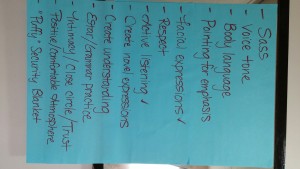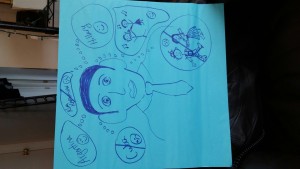Teaching in an IB school for the last two years taught me so much!! As the oldest of five siblings and a single mom of two boys (now men!), I have a tendency to try to take care of everything myself. Not because I think I can do it better, but because I am so programmed to look for potential problems and head them off at the pass. That can be a great quality, but, it gives others the impression that a) problems take care of themselves and b) I want to do everything…..neither of which is true!! The IB emphasis on learner traits really helped me to see how allowing everyone in the class to have a role in problem-solving not only aligned with our practice of classroom jobs, but also helped us all to share responsibilities and our talents every day.
How does the Rule ‘Take Care Of Problems” connect with other Start From The Heart ideas?
Respect–
A. Taking care of one’s own problems is a sign of self-respect. Teaching is complicated. We need to
respect that. Eliminating unnecessary problems is a practical way to honor the work that we do, and
to respect the energy we invest in this job every day.
B. Students need to observe adults solving their own problems. They absorb what we model. Even better
if we vocalize from time to time what we are doing and why. They cannot see inside our heads!! They
don’t hear our hearts!!! So stopping to take sips of water water and mentioning staying hydrated
teaches more than you would imagine. So does stopping to think before responding, showing them how we
choose songs and a number of other behaviors we can demonstrate!
C. When we demonstrate our commitment to avoiding and solving problems, we tell our students that they
matter to us. Students have amazing problem-solving abilities. It isn’t always easy to see,
particularly when some of them appear to be able to solve simple problems, but don’t. But they really
do. We often underestimate the number of problems they deal with every day! When we make it a clear
goal to commit, as a class, to taking care of problems, we respect that they are human beings, with a
lot to deal with, and that they have qualities and abilities that can help the entire group.
D. When we make Taking Care Of Problems a class initiative, we continue to grow as individuals and as a community, with common goals.
Success–
Success is not living a problem-free life. Success is dealing with life’s problems in a positive way whenever possible.
A. Whether we plan ahead alone, or with the help of students, we commit to avoiding
UNNECESSARY problems.
B. When we, and our students, can identify problems as they occur, we can address
those problems before they become insurmountable.
C. When we, and our students, find ways to consciously, creatively and compassionately
address problems as they occur, we experience confidence and relief. That…is
success!
So in order to continue to create an atmosphere of respect, and to prepare and maintain an environment for success, we are going to make Rule #2: Take Care of Problems. Want to get started?! That is the next post!
With love,
Laurie







